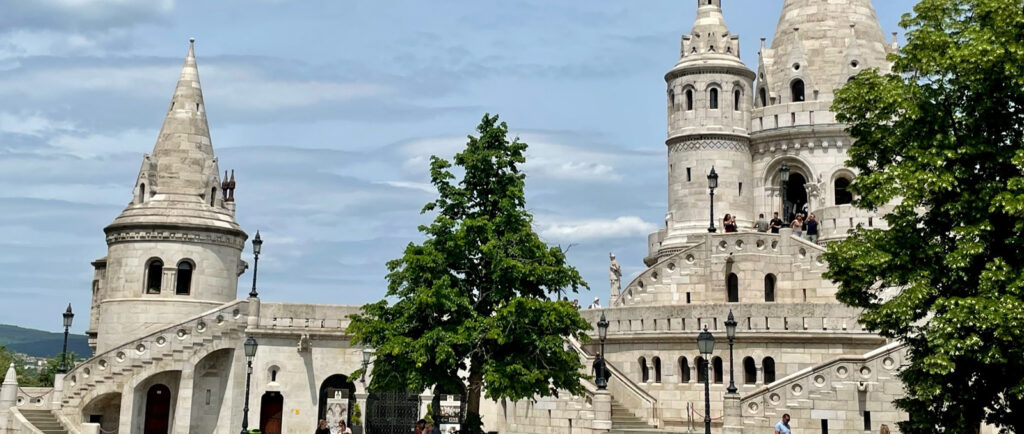
Our driver in Romania dropped us at our hotel in Budapest. It was late enough that we went out for dinner and not much else. Even at night, however, we got the chance to catch a glimpse of the excellent Hungarian architecture.
Originally two separate cities on opposite banks of the Danube, Buda and Pest are now combined into the nation’s capital city. With only three nights available to us, we had to prioritize our time, and spent most of it on the Buda side.
Castle Hill
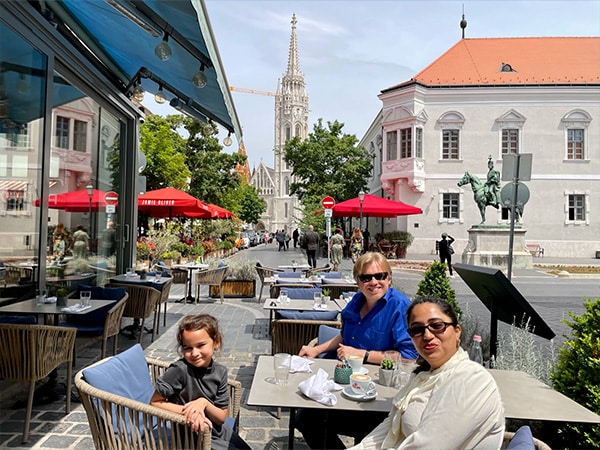
Our first stop the next day was the biggest attraction (for us) in the city: City Hill and the architectural wonders atop it. On the map, it didn’t look like half so long a climb as it turned out. In fact, by the time we reached the summit, Kiran had begun to feel under the weather. We pressed on to see Fisherman’s Bastion, however.
Fisherman’s Bastion
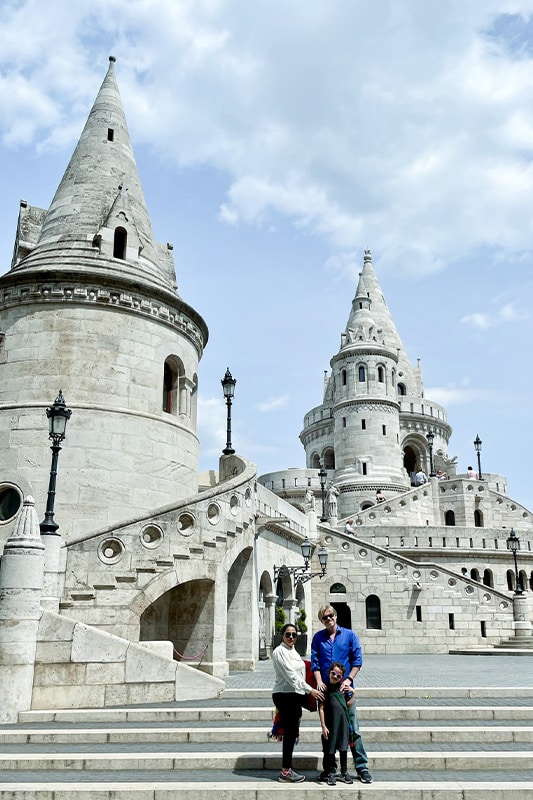
While the original walls came from the 1700s, the stunning fortress of Fisherman’s Bastion—the most iconic structure in Hungary—actually dates to the late 1800s. The name comes from the fisherman’s guild who were entrusted to guard the walls against invaders.
From the balconies you have a commanding view of the river and its far side, including the Hungarian Parliament building. There’s also an evening restaurant up there, which, if we ever come back to Budapest, we definitely want to visit.
Before we had finished with the Bastion, Kiran really begun to feel ill from the heat and fatigue. We took her for lunch, but the poor girl vomited, so we all went back to rest. The next day, we returned to castle hill (taxi this time to stay on the safe side), and also checked out the Matthias Church.
Matthias Church
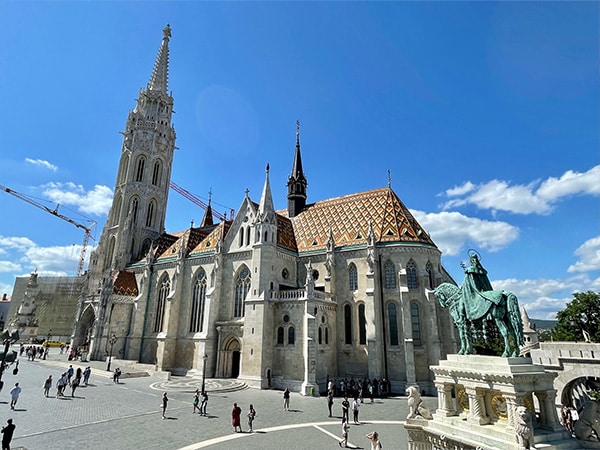
Matthias Church lies in front of Buda Castle. Named for Mathias Corvinus, though built centuries before his time, the church has been the sight of important history in Budapest. It went through numerous renovations, the most recent of which happened only a few years ago.
We had lunch at a local Hungarian restaurant and tried Hungarian goulash, which proved a huge hit with all three of us.
Labyrinth
We wanted to visit the Labyrinth where Vlad Tepes (Dracula) was imprisoned, but it was inexplicably closed the whole time we were there. A disappointment I hope to some day rectify.
Gellert Hill Cave
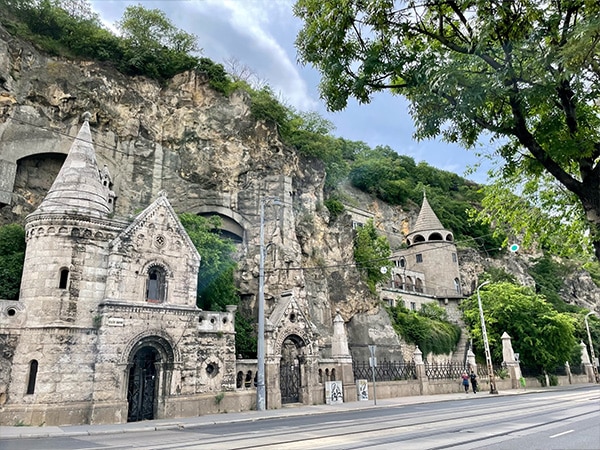
In the 1920s, a group of monks built a church inside a cave network in Gellert Hill. During Communism, the government sealed up the cave. After 1989, though, the cave was reopened and people could again see carved out chapel.
The cave church inside was neat, though not as impressive as the exterior facade. With a headset, you can learn more about the history of the cave and how it was closed up for a time. At the back of the small complex, we did find some finely detailed hand-carved furniture.
Pest

We walked across the Szabadsag Hid (bridge) from Buda to Pest and hung out in a nice cafe (Anna Cafe). Unfortunately, the sun was setting and we had no more time to actually explore the Pest side of the city. Another thing for our next trip.
